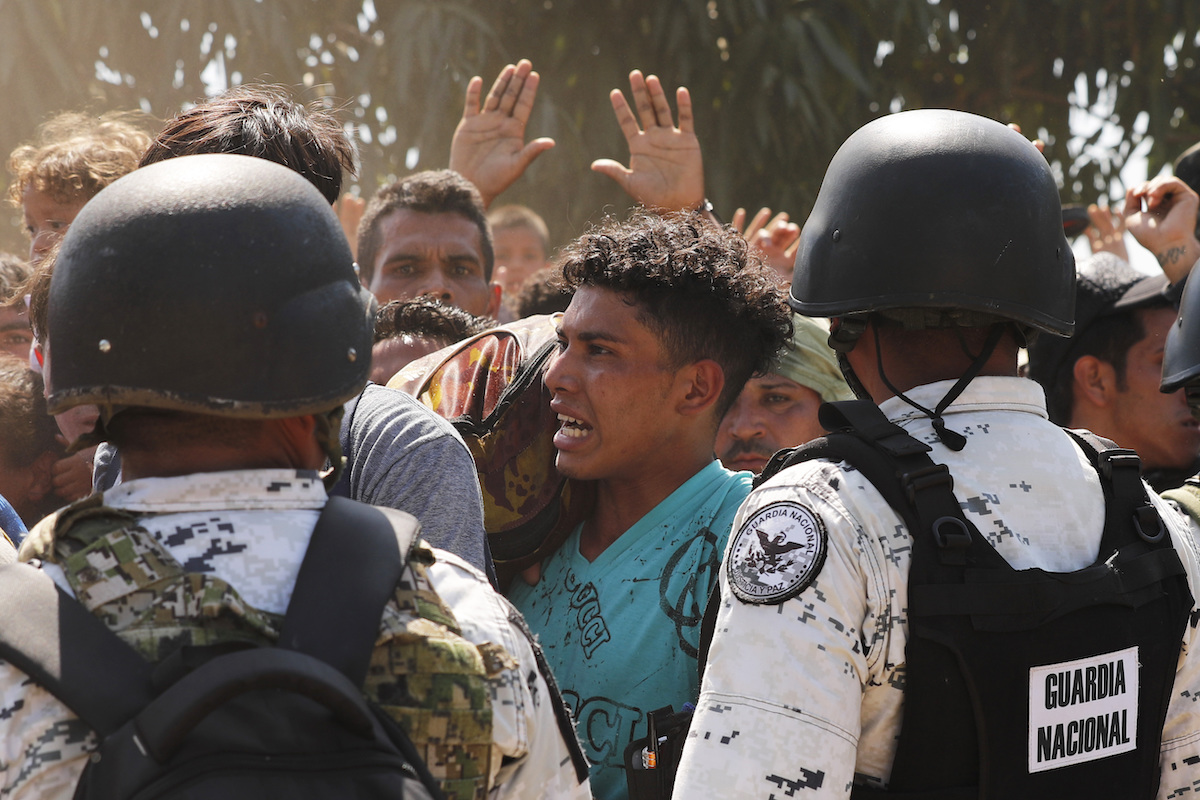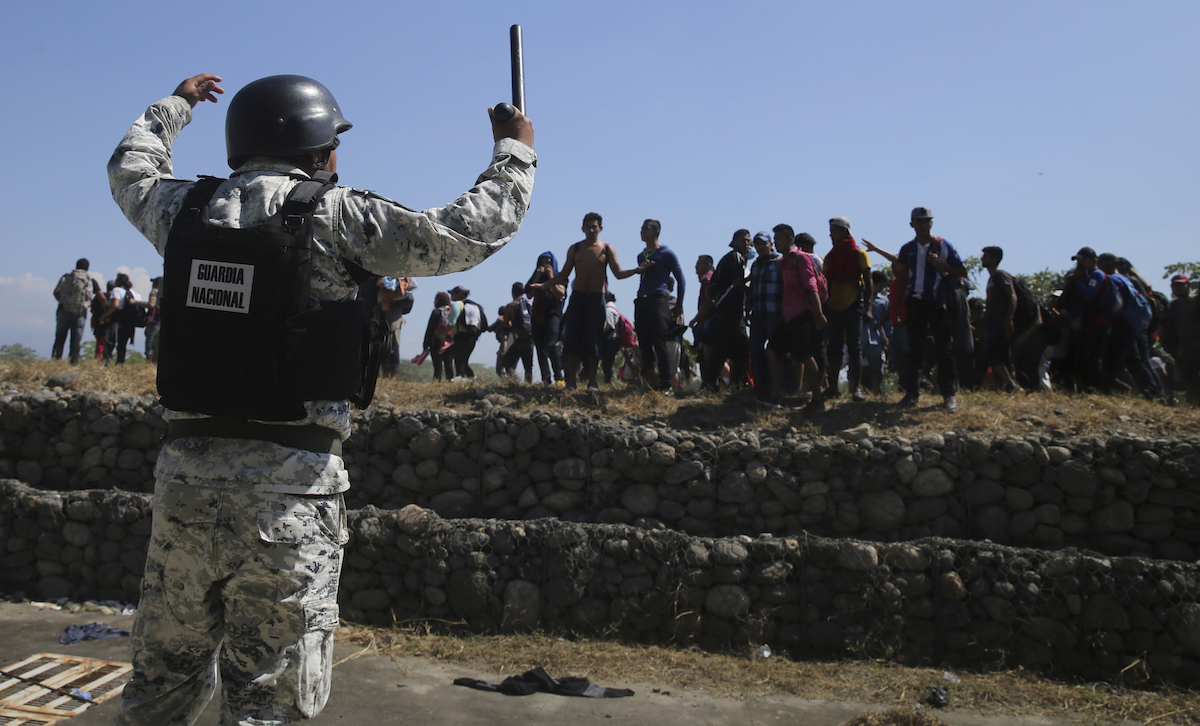

Central American migrants who crossed the Suchiate River from Guatemala to Mexico are stopped by Mexican National Guard on the riverbank near Ciudad Hidalgo, Mexico, Monday, January 20, 2020. (AP Photo/Marco Ugarte)
By CHRISTOPHER SHERMAN, Associated Press
MEXICO CITY (AP) — The headline on a statement from Mexico’s National Immigration Institute read: “INM rescues 800 Central American migrants who entered [Mexico] today irregularly.”
For many people who watched the moments when hundreds of Mexican national guardsmen with helmets and riot shields confronted hundreds of migrants who had been resting in the shade after walking all morning, “rescues” didn’t seem to be the right word.
Defenders of migrants’ rights say rescues typically don’t involve spraying those being rescued with pepper spray. Those requiring rescue usually don’t run away from their rescuers.
But such euphemisms have become the language of immigration policy and not just in Mexico. The same terminology has been employed in Europe for immigrants crossing the Mediterranean, though sometimes those migrants are in unseaworthy vessels in need of assistance.
The same statement Thursday from Mexico’s immigration agency said the migrants were taken to “migration shelters,” which is a step beyond the agency’s previous language calling its detention centers “immigration stations.”
Mexico’s immigration agency has used the term “rescue” for years. Sometimes it has seemed a plausible fit, like when immigration agents find 100 migrants stuffed into the back of a trailer in sweltering heat and the driver has run off. There no doubt are times when migrants require rescuing.
The U.S. Border Patrol uses the term as well —also at times in dubious situations— though most often in scenarios including migrants lost in the desert without water, a migrant drowning in the Rio Grande or migrants found in the back of a semi-trailer.
The migrants rounded up Thursday had entered Mexico by crossing a river, not through immigration controls, so critics wondered why authorities didn’t just say they were detained?
Mexico’s National Immigration Institute did not immediately respond to questions about its terminology.
Sergio Prieto Díaz, chair of the Migration and Trans-border Processes group at the College of the Southern Border, said the government’s language is aimed at justifying and obscuring what is really happening.
“What they’re achieving with this term in a way is disguising the militarization and the repression of immigration at the border,” Prieto Díaz said. “It’s sketching the state as protector and guarantor of people traveling in an unprotected and risky way.”


Central American migrants cross the Suchiate River from Guatemala to Mexico near Ciudad Hidalgo, Mexico, Monday, January 20, 2020. (AP Photo/Marco Ugarte)
The “paternalistic” use of the word de-legitimizes the migrants, he said. “Because the image that they ultimately want to give is this notion that they are rescuing people who act irrationally, who embark on unnecessary dangers, who risk their lives and the lives of their children almost they would say without reason.”
President Andrés Manuel López Obrador didn’t use the word rescue when talking about the migrants Friday, but he expressed satisfaction with the actions of National Guard and applauded their restraint.
He said he had instructed Foreign Affairs Secretary Marcelo Ebrard to make sure the migrants remained safe all the way back to their countries.
“Be careful with security throughout the assisted returns,” López Obrador said he told him, employing the latest bureaucratic euphemism for deportations.



[…] Use of ‘Rescues’ by Mexican Migration Officials Criticized via @AP https://www.latinorebels.com//2020/01/25/useofrescuescriticized/ … […]